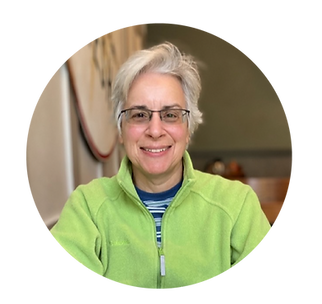
415.938.7766

Getting Ahead of Invisible Spread
Red Blotch, Leaf Roll, Pierce's Disease, Esca
and other profit-devouring, incurable crop diseases
Control the Uncontrollable
The Challenge: Lack of scalable, affordable tools to defeat pre-symptomatic spread
Infected vines and trees often appear healthy for years before visible symptoms become apparent. Disease spreads, pre-symptomatically, until it consumes fields, which must be ripped out. Tools sensitive enough to detect diseases pre-symptomatically (PCR and LAMP testing) haven't been scalable. Tools that scale (multispectral and RGB photographic images and video) are not capable of detecting pre-symptomatic diseases.

The Solution: HV Vision's Hyperspectral Technology
Hyperspectral technology is both scalable and accurate in detecting crop diseases at their pre-symptomatic stage. It can produce field maps showing disease hotspots, field maps with row-by-row results, and it can be integrated into a handheld tool for plant-by-plant testing. It is a sophisticated technology not previously available for agriculture, until now.
HV Vision has combined hyperspectral imaging with our proprietary hardware and AI technology to create the first commercially available solution that accurately identifies and maps pre-symptomatic crop disease for precision roguing.
The Products
-
Hyperspectral Heat Maps - display the scale of infection and identify disease hotspots within a field. Our GPS-enabled heat maps can be layered with any of our other products or with ancillary data such as soil maps, PCR or LAMP test results, fertility test results, and more.
-
Hyperspectral Row Maps - show results pixel-by-pixel for precision roguing. Our GPS-enabled row maps guide ground crews in precision roguing and plant-by-plant disease testing using the Dragonfly hyperspectral device.
-
Hyperspectral Plant-by-Plant Disease Screening - rapid disease diagnostic testing through our unique, in-field tool, The Dragonfly. This non-destructive sampling method takes under two minutes per plant to complete. GPS locations of every test can also be used to populate field maps.
-
Hyperspectral Vigor Indices - such as Chlorophyll, NDVI, NDRE, Nitrogen, and Canopy Density maps are also available and can be viewed in layers.
An Integrated Solution
HV Vision products can be used independently or together as a fully integrated solution. They enable you to find, map and remove pre-symptomatic disease - years sooner than you can today. Extend the productive lifetime of your fields, grow your ROI, and preserve brand reputation. Do it affordably and at scale. Let us show you how.

Protect crop quality and profits
Extend the productive lifespan of your fields
Pre-symptomatic Disease Detection
Plant by Plant
The Dragonfly Hyperspectral Device
HV Vision's rapid disease testing device for in-field use
-
Map and track diseased vines
-
87-90% accurate
-
Validated w/qPCR
-
Guides precision roguing with RTK-enhanced GPS


Pre-symptomatic Disease Detection
Pixel by Pixel
Hyperspectral Row Maps
-
See the healthy plants in each row
-
Locate any plant in the field using embedded GPS
-
Test selected vines with Dragonfly, or pull labs
-
Continually update your maps with Dragonfly results
-
Hyperspectral imagery from manned aircraft
-
Ground sample distance: 18" pixels

Pre-symptomatic Disease Detection
Bird's-eye
Hyperspectral Heat Maps
-
See disease hot spots versus healthy areas
-
See both pre-symptomatic and symptomatic infections
-
Use Dragonfly at hotspot perimeters on individual vines for precision roguing
-
Hyperspectral imagery from manned aircraft
-
Ground sample distance: 18" pixels


Leadership


Michelle has been building young companies in Silicon Valley for twenty-five years. She's helped launch seven companies, four of which became publicly traded, and has completed over $540M in transactions with angel, seed, venture, private equity and institutional investors in the US, Europe and Australia. She co-founded an early startup accelerator, in partnership with McKinsey & Co., in 1999; and is a founding partner in the Tiburon family of seed funds, based in Munich, Germany. Michelle is the granddaughter of an Illinois farming family.


Gerry has been at the forefront of remote sensing and hyperspectral analytics for more than 30 years. His experience includes intelligence requirements, and the design and implementation of systems and algorithms to collect, exploit, and report against those requirements from multi-source data; with special emphasis on environmental phenomenology. For an early AgTech remote sensing startup, he managed the development and engineering team for airborne imagery collection, processing and product development. Gerry has taught remote sensing at the graduate level at both Virginia Tech and SUNY College of Environmental Science & Forestry (ESF).


Paul has over 33 years of innovative agronomic experience, guiding disease and fertility management for marquee growers of high value crops. Paul has developed unique, custom-blend fertilizer formulations that support plant immune function and vigor for disease resistance or symptom mitigation in permanent crops. Paul is also a third generation winemaker.


Joan has been working on government and commercial image data capture, processing, and dissemination systems her entire career. She has held roles as hardware engineer, systems engineer, program manager, corporate R&D manager, and as a regional director for ASPRS. She’s worked on GPS III, GOES East and West, JWST and other cutting edge data collection systems. Joan holds a Bachelor of Science in Imaging Science, RIT, Rochester NY, with certifications in GIS, six sigma and supply chain management.
.


Charlie has been a geospatial industry leader for nearly 40 years. He was a federal employee in geospatial data collection systems before going on to senior roles at a hyperspectral satellite firm, an ecosystems data analytics and as chief industry strategist for one of the largest aerial data capture firms. Charlie has received multiple ASPRS Presidential and Significant Achievement awards. He’s served as an ASPRS director and is an ASPRS Fellow. Charlie also served on the inaugural National Geospatial Advisory Committee. He holds 30 US Patents, primarily in the geospatial sector. He has a Bachelor of Science & Masters of Science in Imaging Science from RIT in Rochester NY.



